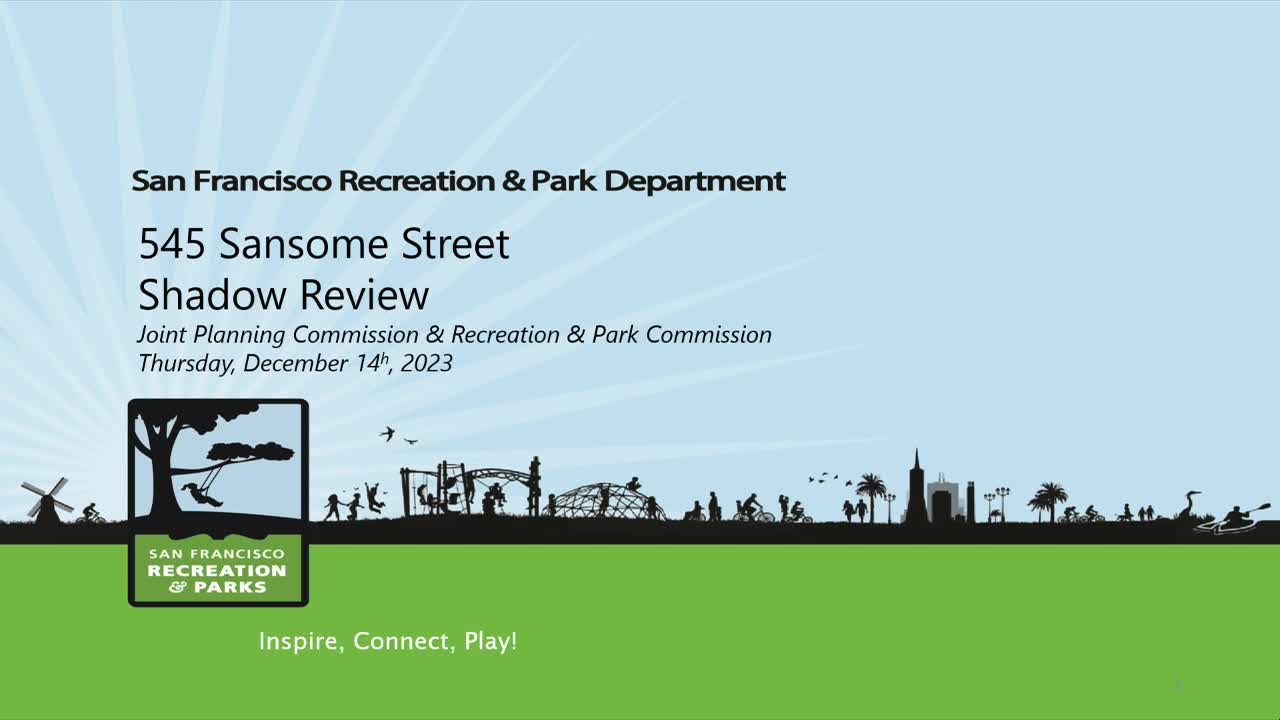Joint Commissions evaluate shadow impact on Maritime Plaza from new development project
December 14, 2023 | San Francisco City, San Francisco County, California

This article was created by AI summarizing key points discussed. AI makes mistakes, so for full details and context, please refer to the video of the full meeting. Please report any errors so we can fix them. Report an error »

A pivotal discussion on shadow impacts from new developments took center stage at the recent San Francisco government meeting, focusing on the proposed project near Maritime Plaza. The meeting highlighted the delicate balance between urban development and the preservation of public park spaces, particularly in light of the city's sunlight ordinance, Proposition K, which aims to protect parks from adverse shadow effects.
The presentation detailed the shadow analysis associated with the project, revealing that the proposed development would increase the existing shadow load on Maritime Plaza by a mere 0.0345%. Currently, the park experiences a shadow load of 67.88%, and this increase would bring it to 67.91%. The analysis indicated that the new shadows would primarily affect the western half of the park during late afternoons in spring and summer, specifically from mid-March to mid-May and mid-July to late September.
Key to the discussion was the 1989 memo adopted by the Recreation and Park Commission, which established criteria for assessing significant shadow impacts. This includes both quantitative measures, such as the percentage of shadow increase, and qualitative factors like the time of day and year when shadows occur, as well as the public benefits of the project.
Commissioners were reminded that their role is advisory; even if they determine that the shadow poses a significant impact, it is ultimately up to the Planning Commission to weigh the project's pros and cons. The meeting underscored the ongoing challenge of urban development in a city known for its iconic parks and public spaces, as officials navigate the complexities of growth while safeguarding community resources.
As the city continues to evolve, the implications of this discussion will resonate, influencing future development projects and their relationship with San Francisco's cherished parks.
The presentation detailed the shadow analysis associated with the project, revealing that the proposed development would increase the existing shadow load on Maritime Plaza by a mere 0.0345%. Currently, the park experiences a shadow load of 67.88%, and this increase would bring it to 67.91%. The analysis indicated that the new shadows would primarily affect the western half of the park during late afternoons in spring and summer, specifically from mid-March to mid-May and mid-July to late September.
Key to the discussion was the 1989 memo adopted by the Recreation and Park Commission, which established criteria for assessing significant shadow impacts. This includes both quantitative measures, such as the percentage of shadow increase, and qualitative factors like the time of day and year when shadows occur, as well as the public benefits of the project.
Commissioners were reminded that their role is advisory; even if they determine that the shadow poses a significant impact, it is ultimately up to the Planning Commission to weigh the project's pros and cons. The meeting underscored the ongoing challenge of urban development in a city known for its iconic parks and public spaces, as officials navigate the complexities of growth while safeguarding community resources.
As the city continues to evolve, the implications of this discussion will resonate, influencing future development projects and their relationship with San Francisco's cherished parks.
View full meeting
This article is based on a recent meeting—watch the full video and explore the complete transcript for deeper insights into the discussion.
View full meeting
